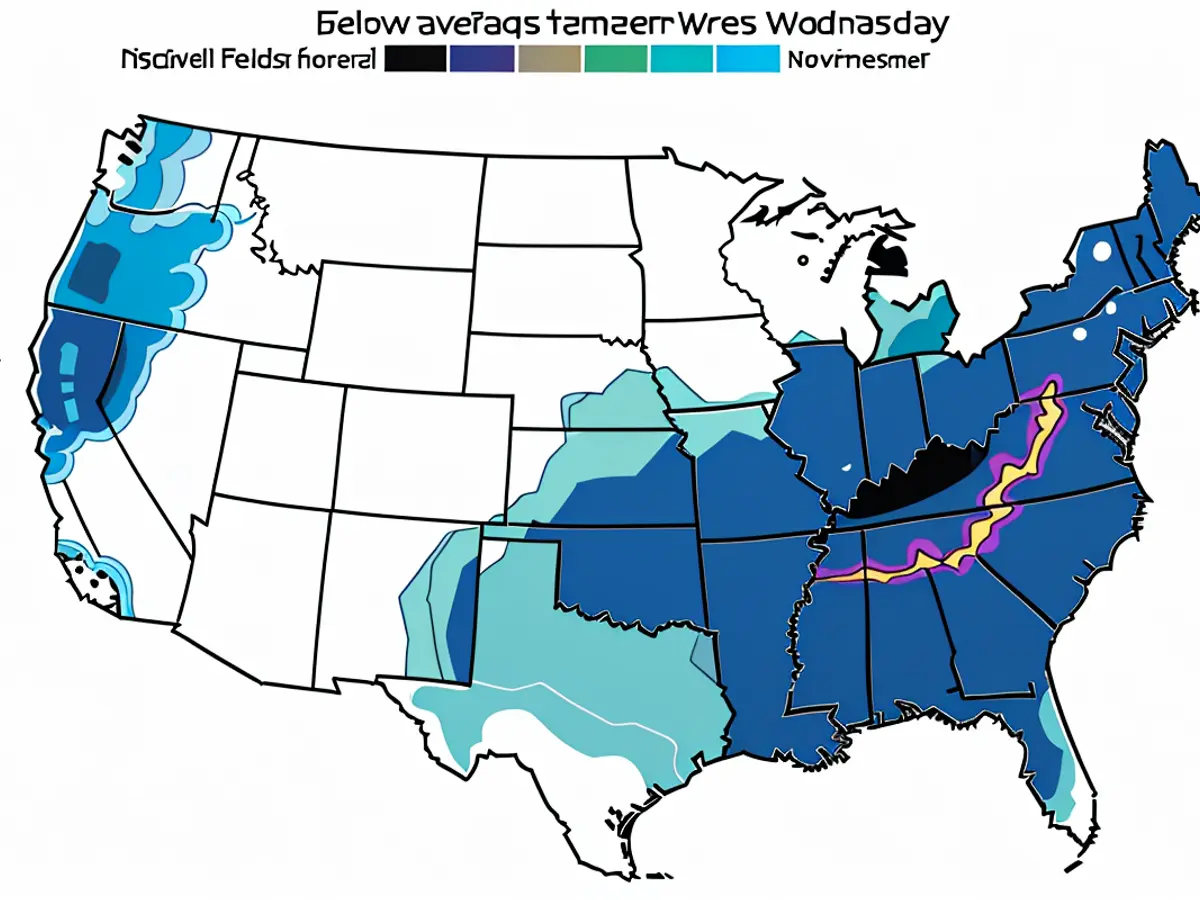Copernicus - Fires in Canada responsible for a quarter of global forest fire emissions
At the end of the year, fierce forest fires raged again around the globe. The situation was particularly bad in Canada, as an analysis by the EU's Copernicus Atmospheric Monitoring Service (CAMS) shows. The fires there were responsible for almost a quarter (23 percent) of global carbon emissions from forest fires, as Copernicus announced on Tuesday. According to the report, the fires, which started in early May and lasted until October, released 480 megatons of CO2 into the atmosphere. Worldwide, forest fires caused 2100 megatons of CO2 emissions by the beginning of December.
Emissions quintupled compared to previous decades
This is a negative record for Canada and is almost five times the average of the past 20 years. According to the Copernicus report, the fires in British Columbia, Alberta, Ontario, Nova Scotia, the Northwest Territories and Quebec were exceptional not only in terms of CO2 emissions, but also in terms of their intensity, duration and impact on local communities.
According to the press release, the smoke had a significant impact on air quality. This was not only the case in the immediate vicinity, but also in large parts of North America and beyond. Large plumes of smoke had drifted across the Atlantic and clouded the skies in parts of Europe. "The impact of the wildfires on air quality in North America, and the fact that Europe has experienced hazy skies as a result of these fires, is a clear indication of their scale," said CAMS expert Mark Parrington, according to the statement.
Forest fire season in the USA and Russia relatively quiet
While Canada was hit particularly hard this year, the USA and Russia had a relatively quiet wildfire season, with CO2 emissions estimated to be below the average of the past 20 years. However, the fires on the island of Maui, which is part of the US state of Hawaii, were fierce, costing a number of lives and causing severe damage to infrastructure. In addition to Russia, Kazakhstan and Mongolia were also affected by major forest fires in April and May.
In the Mediterranean region, fires were particularly severe on the Greek island of Rhodes, in the Greek-Turkish border region and in other parts of Greece. Spain recorded the highest emissions for the month of March in 21 years due to fires on the border between the regions of Aragon and Valencia and in Asturias. In August, the Canary Islands were also severely affected by forest fires.
Weather phenomenon increases the risk of forest fires in the southern hemisphere
According to Copernicus, conditions in the southern hemisphere are increasing the risk of forest fires due to the El Niño weather phenomenon. This has had an impact on fires in Indonesia and Australia. In South America, there were significant fires in Chile and Argentina at the beginning of the year.
The links between climate change and forest fires are complex, according to the press release. Although CO2 emissions as a result of the fires are not one of the main drivers of the increase in greenhouse gases in the atmosphere, higher temperatures and higher levels of these gases make unprecedented forest fires like the one in Canada this year more likely.
The Copernicus Atmospheric Monitoring Service (CAMS) is one of several components of the European Union's Copernicus program. Among other things, it provides data obtained from satellite images on the atmosphere, oceans, land, climate change, security and energy.
Read also:
- While the railroads are on strike: weather service warns of "danger from black ice" in many parts of Germany
- Slippery roads, canceled flights - snow chaos paralyzes Bavaria
- Between winter wonderland and traffic chaos: how the first snow weekend went in Germany
- Weather situation in southern Germany eases, but air and rail traffic still disrupted
Britain's British Columbia region also experienced significant forest fires, contributing to the global total. The Copernicus report revealed that the fires in Canada, including British Columbia, released over 160 megatons of CO2 into the atmosphere, which is a notable portion considering the global total of 2100 megatons by December.
While Canada, the USA, and Russia have had notable forest fire activity, other regions in North America and Europe have not been left untouched. Forest fires in Ontario, Canada, and the Greek island of Rhodos in Europe added to the emissions total.
Despite the quiet forest fire seasons in some parts of North America and an increase in forest fires in the Mediterranean region, the overall emissions from forest fires in the USA were estimated to be higher than those from Russia due to the intense forest fires in Maui, Hawaii.
In the European context, the rising emissions from forest fires in several regions contribute to the overall carbon footprint. European countries, including Germany, have experienced hazy skies due to the significant wildfire smoke drifting from North America.
While the Copernicus data show that forest fire emissions contribute to the overall greenhouse gas emissions, the links between climate change and forest fires are intricate. Higher temperatures and greenhouse gas levels make forest fires such as the one in Canada more likely, but they are not the primary drivers of these gases.
Source: www.stern.de








